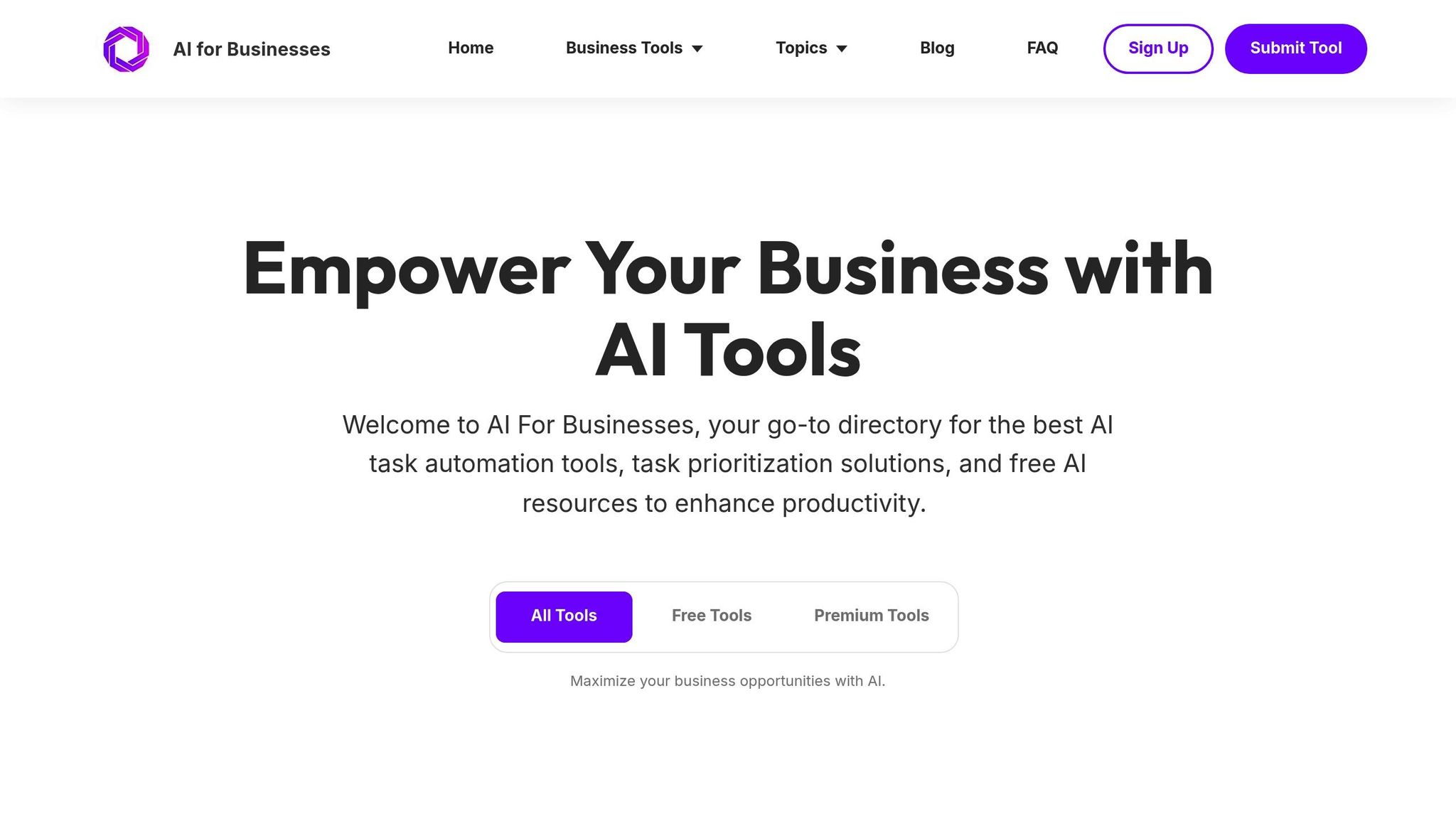End-to-end encryption (E2EE) is a must-have for businesses aiming to secure sensitive data, protect customer trust, and comply with regulations like GDPR and HIPAA. This guide breaks down how E2EE works, its benefits, and how businesses can implement it effectively. Here's a quick overview:
- What is E2EE? Data is encrypted on the sender's device and decrypted only on the recipient's device, ensuring no third party can access it during transmission.
- Why use E2EE? It prevents data breaches, supports regulatory compliance, protects intellectual property, and builds customer confidence.
- How does it work? E2EE uses encryption algorithms (e.g., AES-256, RSA) and key management protocols to secure data. Symmetric encryption is faster, while asymmetric encryption offers more security.
- Key tools and protocols: Signal Protocol for messaging, TLS with E2EE for web apps, and PGP for email encryption are some of the top options.
- Implementation steps: Assess your data flows, choose the right framework, pilot test, and train employees. Use AI tools to automate key management.
E2EE is not just about compliance - it's about safeguarding your business's most critical assets. Learn which frameworks suit your needs and how to deploy them efficiently.
What Is End-to-End Encryption (E2EE) And How Does It Work? | E2EE Explained | Simplilearn

How End-to-End Encryption Works
To truly grasp the importance of end-to-end encryption (E2EE), it helps to understand how it functions behind the scenes. At its core, E2EE relies on advanced mathematical algorithms to convert readable data into scrambled code, ensuring that only authorized parties can access the original information.
The Encryption and Decryption Process
Encryption kicks in the moment data leaves the sender's device. Before transmission, the data is transformed into a secure code using complex algorithms and unique keys. This process ensures that only those with the right key can decode the information.
Here’s how it works: plaintext (readable data) is encrypted into ciphertext (scrambled, unreadable data) using a unique key. The strength of this encryption depends on the algorithm used and the length of the encryption key. For secure key exchange, protocols like Diffie-Hellman are employed. These protocols allow two parties to establish a shared secret over an insecure channel without ever transmitting the actual key.
Decryption is the reverse of encryption. When the encrypted data reaches its destination, the recipient’s device uses their private key to convert the ciphertext back into plaintext. This entire process happens in milliseconds, making it seamless for users while maintaining strong security.
Understanding this process lays the groundwork for exploring different encryption methods.
Symmetric vs. Asymmetric Encryption
Encryption methods fall into two categories, each serving different purposes.
Symmetric encryption uses the same key for both encryption and decryption. A widely used example is AES-256 (Advanced Encryption Standard with 256-bit keys), which is considered highly secure with current technology. Its speed and efficiency make it ideal for tasks like encrypting large files or databases. However, the challenge lies in securely sharing the key between parties. Once the key is exchanged, symmetric encryption delivers excellent performance for ongoing communications.
Asymmetric encryption, on the other hand, uses a pair of keys: a public key and a private key. The public key can be shared openly, while the private key remains confidential. Data encrypted with the public key can only be decrypted with the corresponding private key, and vice versa. Algorithms like RSA-4096 and Elliptic Curve Cryptography (ECC) are common in this category. While more secure, asymmetric encryption is slower than symmetric methods.
To combine the strengths of both approaches, hybrid encryption is often used. In this model, asymmetric encryption handles the secure exchange of symmetric keys, which are then used for faster data transmission. This approach balances security and performance, making it a cornerstone of modern E2EE systems.
| Encryption Type | Key Characteristics | Best Use Cases | Performance |
|---|---|---|---|
| Symmetric (AES-256) | Same key for encryption/decryption | Large file transfers, database encryption | Very fast |
| Asymmetric (RSA-4096, ECC) | Public/private key pairs | Key exchange, digital signatures | Slower but more secure |
| Hybrid | Combines both methods | Most E2EE implementations | Balanced security and speed |
This hybrid approach is widely adopted in real-world encryption systems for its practicality and effectiveness.
Key Management Best Practices
Even the strongest encryption is only as secure as its key management. Proper key management is essential to maintaining the integrity of encrypted data. Without it, even the most advanced encryption can be rendered useless.
Secure key storage is a top priority. Encryption keys should be stored separately from the data they protect. Many organizations rely on Hardware Security Modules (HSMs) - specialized devices designed to generate, store, and manage cryptographic keys in a tamper-resistant environment. HSMs make it extremely difficult for attackers to access keys, even with physical access.
Key rotation is another critical practice. Regularly changing encryption keys limits the damage if a key is compromised. High-security environments often rotate keys every 90 days, although the frequency depends on the sensitivity of the data and regulatory requirements. Automated key rotation systems can ensure consistency and reduce the risk of human error.
Access controls are vital for restricting who can access encryption keys. Following the principle of least privilege ensures that users and systems have only the access they need to perform their tasks. Adding multi-factor authentication provides an extra layer of security for accessing keys.
Key backup and recovery procedures are essential for business continuity. If keys are lost or corrupted, having secure backups ensures that encrypted data remains accessible. Some organizations use key escrow services or split key storage, requiring multiple parties to collaborate to reconstruct a key.
Audit trails track all key-related activities, such as creation, usage, rotation, and deletion. These logs help identify potential security breaches and ensure compliance with regulations. Regular audits of key management practices can uncover vulnerabilities before they become major issues.
Given the complexity of key management, many businesses turn to managed encryption services or specialized security vendors. While these solutions can simplify implementation, it’s crucial to thoroughly evaluate providers to ensure they meet both security and compliance standards.
Top End-to-End Encryption Frameworks and Protocols
Let’s dive into some of the leading end-to-end encryption (E2EE) frameworks and protocols that businesses rely on for secure communications. Each one has its own strengths and trade-offs, making some better suited for certain use cases than others.
Signal Protocol

The Signal Protocol is often considered the gold standard for secure messaging. Originally developed by Open Whisper Systems, it powers major platforms like WhatsApp, Signal, and Facebook Messenger’s secret conversations feature.
What makes it stand out? Perfect forward secrecy. This means that even if encryption keys are compromised, past messages remain secure. The protocol generates a new key for every message, so a single breach won’t expose an entire conversation history.
At its core, the Signal Protocol uses the Double Ratchet Algorithm, prekeys, and a triple Elliptic-curve Diffie-Hellman handshake to ensure messages are automatically encrypted and decrypted without requiring users to manage keys.
For businesses, this protocol is ideal for real-time messaging, such as internal communications, customer support, or client consultations. It integrates seamlessly and offers robust security. However, it’s not designed for file transfers or database encryption, which could limit its use in certain scenarios.
For web-based applications, other solutions like enhanced TLS provide additional options.
TLS with E2EE Extensions
Transport Layer Security (TLS) is the backbone of secure web communications. When paired with end-to-end encryption extensions, it becomes a powerful tool for businesses handling sensitive online transactions or data.
Here’s how it works: Standard TLS secures the connection between a client and server. Adding E2EE extensions ensures that even the server hosting the service cannot decrypt the transmitted data. This is especially valuable for industries like healthcare, finance, or legal services, where protecting sensitive information is non-negotiable.
Typically, this approach involves encrypting data on the client side before it’s transmitted, with TLS securing the transport layer. This dual-layer protection safeguards against network-level attacks and potential server breaches. Many secure file-sharing platforms and encrypted email services rely on this model to deliver strong privacy guarantees.
One major advantage? It’s compatible with existing web infrastructure, meaning businesses can often implement it without overhauling their systems. This makes it a practical choice for organizations looking to enhance security without major disruptions.
Other Popular Protocols
Beyond messaging and web communication, several other protocols expand the scope of encryption to meet diverse business needs.
- OMEMO: Built on the XMPP messaging protocol, OMEMO enables encrypted chats across multiple devices. Since it’s based on an earlier version of the Signal Protocol, it offers reliable encryption for multi-device use. However, version fragmentation can create compatibility issues, especially in enterprise settings.
- Matrix (Olm/Megolm): Designed for federated communications, Matrix supports both private messaging and secure group collaboration. It combines two protocols: Olm for one-on-one chats and Megolm for efficient group encryption. With over 115 million users on public servers as of April 2024, Matrix has been adopted by governments and large organizations. That said, its history includes several cryptographic vulnerabilities (e.g., CVE-2021-34813, CVE-2021-40824, CVE-2022-39251, and CVE-2022-39248), underscoring the need for regular security updates.
- PGP (Pretty Good Privacy)/GPG (GNU Privacy Guard): PGP and its open-source counterpart GPG remain go-to options for secure emails and file transfers. They use a hybrid encryption system, combining the speed of symmetric encryption with the security of asymmetric key exchange. PGP’s decentralized trust model allows businesses to verify communication partners without relying on centralized certificate authorities. However, its complexity can be a barrier for those without technical expertise.
| Protocol | Primary Use Case | Key Strength | Main Limitation |
|---|---|---|---|
| Signal Protocol | Real-time messaging | Perfect forward secrecy | Limited to messaging apps |
| TLS with E2EE | Web-based applications | Easy integration with systems | Requires careful implementation |
| OMEMO | Multi-device XMPP | Cross-device synchronization | Fragmentation issues |
| Matrix (Olm/Megolm) | Federated communications | Broad adoption | History of security issues |
| PGP/GPG | Email and file transfer | Decentralized trust model | High technical complexity |
Choosing the right protocol depends on your business’s specific needs and technical capabilities. Often, combining multiple protocols tailored to different use cases provides the best overall security strategy.
How to Implement End-to-End Encryption in Your Business
Implementing end-to-end encryption (E2EE) in your business is not just about picking the right technology - it's about crafting a security strategy that aligns with your operations and complies with legal standards. Transitioning from understanding E2EE to deploying it requires thoughtful planning, rigorous testing, and clear protocols.
Steps to Deploy E2EE Frameworks
Start by identifying how data flows through your business and where vulnerabilities exist. This helps you choose the right encryption framework for your needs. Here's how to approach it:
- Conduct a thorough security assessment to map data flows and pinpoint weak spots.
- Define encryption requirements tailored to each department's needs.
- Select a framework that aligns with your business operations.
- Roll out the system in phases, prioritizing critical communications.
- Test the framework with a small pilot group before full deployment.
- Establish and document key management procedures.
Framework selection should be guided by your use cases. For example, if secure team communication is your goal, consider platforms that integrate the Signal Protocol. For web applications managing sensitive customer data, TLS with E2EE extensions is a solid choice. Businesses handling confidential documents might benefit from using PGP/GPG for email encryption alongside secure file-sharing tools.
During the pilot phase, closely monitor how encryption affects system performance, ease of use, and compatibility with existing tools. Documenting any issues and solutions will streamline the broader rollout.
Key management is another critical piece. Decide who will have access to master keys, how backup keys will be stored, and how keys will be rotated or recovered. Many companies use hardware security modules (HSMs) or cloud-based key management services to simplify this process.
Meeting Regulatory Compliance Requirements
Beyond technical execution, E2EE must meet legal and regulatory standards specific to your industry. Here's what to keep in mind:
- HIPAA compliance: Healthcare organizations need to use NIST-approved encryption algorithms, maintain detailed communication logs, and ensure third-party encryption services are covered by business associate agreements.
- GDPR considerations: If you handle data from the European Union, ensure encrypted personal data stays within approved jurisdictions. Your system must also allow for data subject requests, such as locating, exporting, or deleting specific encrypted information.
- Financial regulations: Banks and financial institutions must adhere to standards like the Gramm-Leach-Bliley Act and PCI DSS, which often require specific key lengths, regular security assessments, and strict documentation of cryptographic processes.
- Industry-specific standards: Legal firms must safeguard attorney-client privilege by ensuring no unauthorized access, even from service providers. Government contractors may need to meet FIPS 140-2 standards, while educational institutions must comply with FERPA for student records.
Documentation is crucial for compliance. Maintain detailed records of your encryption policies, key management practices, access controls, and incident response plans. These records are invaluable during audits and help demonstrate that you're using encryption effectively.
Employee Training and Error Prevention
Even the best encryption system can fail if employees don’t use it correctly. Regular, role-specific training ensures your team understands how to maintain E2EE security.
- Tailored training: Customize training for each department. For instance, sales teams should learn how to securely communicate with clients, while IT staff need in-depth knowledge of key management and troubleshooting.
- Streamlined tools: Avoid introducing overly complex systems that lead to workarounds. Instead, integrate encryption into tools your team already uses, like Slack or email platforms.
- Clear policies: Define what data must be encrypted, approved communication channels, and consequences for policy violations. Provide employees with straightforward guidelines to follow.
Regular training refreshers are essential to keep everyone up to date on evolving threats and best practices. Quarterly sessions can review new risks, update procedures, and use real-world examples to emphasize lessons.
Monitor employee activity using encryption logs to identify gaps in compliance. Instead of punishing mistakes outright, treat them as learning opportunities. If certain issues recur, it could signal a need to revise your procedures or improve your tools.
Finally, implement strict access controls and maintain audit logs to reduce insider threats. Limit decryption access, track encryption-related activities, and have procedures in place to quickly revoke access when roles change or employees leave.
sbb-itb-bec6a7e
Framework Comparison: Strengths and Limitations
When it comes to implementing end-to-end encryption (E2EE), choosing the right framework is critical. Each framework has its own strengths and trade-offs, so understanding their performance and limitations can help businesses make an informed decision. Below is a detailed comparison of popular E2EE frameworks, designed to help you evaluate which one aligns best with your operational needs, compliance requirements, and technical capabilities.
E2EE Framework Comparison Table
The table below breaks down key criteria for several widely used E2EE frameworks, offering a clear view of their use cases, encryption methods, key management processes, and more.
| Framework | Use Case | Encryption Type | Key Management | Performance Impact | Compliance Support | Main Strengths | Key Limitations |
|---|---|---|---|---|---|---|---|
| Signal Protocol | Messaging & communications | Double Ratchet with X3DH | Automatic forward secrecy | Low overhead | GDPR, some HIPAA | Strong forward secrecy and proven security | Best for messaging; custom integration required for other uses |
| TLS 1.3 with E2EE | Web applications & APIs | AES-256-GCM with ECDHE | Certificate-based authentication | Medium overhead | PCI DSS, HIPAA, SOX | Widely compatible with existing web infrastructure | Endpoint security needs additional measures |
| PGP/GPG | Email & file encryption | RSA/ECC with AES | Manual key exchange | High overhead | HIPAA, legal discovery | Reliable for message confidentiality in regulated sectors | Manual key management is operationally complex |
| Matrix Protocol | Enterprise messaging | Olm/Megolm encryption | Decentralized key sharing | Medium overhead | GDPR, limited HIPAA | Transparent, decentralized, and open-source | Complex server management and mobile optimization challenges |
| WebRTC DTLS-SRTP | Video/voice calls | DTLS 1.2/1.3 | Session-based ephemeral | High bandwidth usage | Limited compliance | Great for real-time performance and NAT traversal | May require additional network configuration for firewalls |
| OTR Protocol | Legacy chat systems | AES with DSA signatures | Manual verification | Low overhead | Basic privacy laws | Offers deniability and forward secrecy | Lacks modern support; considered outdated |
Framework Highlights
- Signal Protocol: Known for its robust forward secrecy and security, it's an excellent choice for messaging applications. However, integrating it into custom systems may require additional development effort.
- TLS 1.3 with E2EE Extensions: A practical solution for web-based businesses, leveraging existing TLS infrastructure. While it secures data in transit effectively, endpoint security remains a concern that businesses must address separately.
- PGP/GPG: A go-to option for email encryption in industries like healthcare and legal. Its strong message confidentiality is a major plus, but the manual key exchange process can complicate operations.
- Matrix Protocol: Ideal for organizations seeking control over their communication systems. Its decentralized design and open-source nature are appealing, but they introduce challenges in server management and mobile optimization.
- WebRTC DTLS-SRTP: Perfect for real-time communication like voice and video calls, offering excellent performance. However, additional network setup might be necessary to address firewall compatibility issues.
- OTR Protocol: While it provides deniability and forward secrecy for legacy chat systems, its limited modern support makes it less practical for today's needs.
Key Takeaways
Each framework offers distinct advantages depending on the use case. For instance, Signal Protocol is highly efficient for secure messaging, while PGP/GPG is better suited for email encryption in regulated environments. On the other hand, Matrix Protocol stands out for its decentralized architecture, making it a compelling choice for businesses looking to maintain direct control over their communication systems. Ultimately, the right framework depends on your specific operational goals and technical requirements.
Using AI Tools for Better Data Security
End-to-end encryption frameworks have long been the backbone of secure communication. Now, artificial intelligence is stepping in to reshape how businesses handle encryption processes. By automating tasks like key generation, rotation, and storage, AI-powered tools are turning what was once a complex, manual endeavor into a streamlined, automated system. This not only simplifies operations but also reduces the likelihood of human error. Let’s take a closer look at how AI is enhancing encryption management.
AI Tools for Encryption Management
For modern businesses, managing encryption keys across various systems can be a daunting task. Traditional methods demand meticulous manual oversight, leaving room for inefficiencies and mistakes. AI is changing the game by automating critical encryption processes, making key management more efficient and secure.
"AI techniques can improve encryption techniques, strengthen threat detection, and simplify management of keys. Additionally, using AI approaches helps streamline key management procedures by automating the creation and secure storage of encryption keys." - DW Observatory
One of the most impactful applications of AI in this space is Automated Key Generation and Intelligent Storage. Advanced AI algorithms can create cryptographically secure keys using sophisticated randomization techniques. These systems can also automatically rotate keys based on pre-set schedules or real-time risk assessments. By analyzing usage patterns, AI ensures that keys are distributed securely and only to the appropriate systems, significantly reducing the risks tied to manual key distribution.
For example, Workik AI, an encryption code generator, leverages platforms like AWS KMS and HashiCorp Vault to automate key rotation and storage. It also integrates with Azure Key Vault to simplify encryption tasks for developers working across multiple cloud environments. Additionally, AI can automate the generation of encryption algorithms such as AES, RSA, SHA, and ECC, further streamlining key management processes.
These AI-driven advancements align seamlessly with existing end-to-end encryption (E2EE) frameworks, enhancing the overall security of data systems.
Find AI Tools on AI for Businesses

AI’s role in encryption management is just one piece of the puzzle. Businesses can also explore a variety of AI-powered tools to strengthen overall data protection. For small and medium enterprises (SMEs) aiming to elevate their security strategies, AI for Businesses offers a curated directory of AI tools designed to transform operations and improve efficiency.
From automated encryption solutions to tools like Writesonic for content creation and Rezi for professional document management, the platform provides a wide range of options to complement data security initiatives. With affordable plans tailored for SMEs and scale-ups, these tools are accessible to businesses of all sizes. For larger organizations, enterprise options include custom tool integration and dedicated support to ensure smooth implementation of AI solutions.
Beyond encryption, AI for Businesses also features tools that support broader goals. For instance, Stability.ai aids in creative content generation, while Looka helps businesses develop professional branding materials. Together, these tools contribute to a holistic digital strategy that not only boosts productivity but also safeguards critical assets.
Conclusion: Key Takeaways for Businesses
After examining encryption methods and frameworks, it's clear that end-to-end encryption (E2EE) is no longer optional for businesses - it’s a necessity. With over 1,000 global cybersecurity laws in place, protecting your data is not just about compliance but about securing your most critical asset. This guide has outlined strategies and frameworks that can help businesses navigate the challenges of modern data protection.
Making E2EE a Business Priority
Businesses that embrace E2EE gain more than just regulatory compliance - they earn customer trust. In today’s world, consumers expect companies to handle their data responsibly and transparently. Failing to meet these expectations can lead to penalties, reputational damage, and the loss of customer loyalty.
For industries like financial services, healthcare, and e-commerce, where sensitive data is a constant, the stakes are even higher. A single data breach can result in fines, lawsuits, compensation payouts, and irreversible harm to your brand. On the other hand, implementing strong encryption measures - like AES-256, SSL/TLS, and end-to-end encryption - can prevent such disasters while ensuring data integrity and compliance.
It’s tempting to rely on off-the-shelf software for its affordability and ease of use, but these solutions often lack critical features like advanced encryption, role-based access control (RBAC), and regulatory compliance tools. Custom software, while a larger upfront investment, offers robust encryption, built-in compliance for standards like PCI-DSS, HIPAA, and GDPR, and even AI-driven fraud detection. The long-term benefits far outweigh the costs.
Next Steps for Implementation
Start by evaluating your current security measures. Identify your business needs and choose E2EE frameworks that align with industry regulations while protecting sensitive data. If your business is subject to government compliance requirements, look into specialized solutions designed to simplify regulatory adherence. For instance, PreVeil Pass supports compliance with 102 of the 110 NIST SP 800-171 security controls, significantly easing the burden of meeting these standards.
Automation can also play a key role in managing compliance. By automating oversight, you reduce the manual workload and ensure consistency across your security protocols. Additionally, consider investing in hardware-based encryption for data stored on portable devices. Tools like encrypted USB drives and SSDs provide stronger protection than software-based encryption, which can sometimes be disabled by users.
Don’t overlook the human element in cybersecurity. Employees are often the weakest link, so regular training on spotting phishing attempts, avoiding social engineering scams, and following cybersecurity best practices is essential. Even the most advanced encryption frameworks depend on informed and vigilant users.
AI-driven encryption management can further enhance your security efforts. Platforms like AI for Businesses offer tools to streamline encryption management while helping with other aspects of your digital strategy. From encryption solutions to productivity tools like Writesonic and Looka, these resources can help small and medium-sized businesses build secure, efficient digital ecosystems.
Take the first step by assessing your current security posture. Select frameworks that balance security, practicality, and affordability - especially those designed with SMEs in mind. Lightweight, privacy-focused solutions can provide strong protection without overwhelming limited systems. The choices you make today will shape your business’s resilience and trustworthiness in the future.
FAQs
How can businesses choose the right end-to-end encryption framework to meet their needs and comply with regulations?
To choose the best end-to-end encryption (E2EE) framework, businesses should first evaluate their specific requirements. This includes understanding the sensitivity of the data they manage and identifying potential risks. It’s equally important to factor in compliance with regulations like GDPR, HIPAA, or other applicable laws to ensure the chosen framework meets all legal obligations.
When reviewing frameworks, focus on encryption algorithms such as AES, RSA, or the Signal Protocol, as they are widely recognized for their reliability and robust security. Also, consider solutions that integrate smoothly with your current systems and offer the flexibility to grow alongside your business. Striking the right balance between security, compliance, and operational functionality will help businesses deploy an E2EE solution that effectively protects their data.
What challenges do businesses face when adopting end-to-end encryption, and how can they address them?
Implementing end-to-end encryption (E2EE) can present several hurdles for businesses. Here are some of the most common challenges:
- Managing encryption keys: Safeguarding encryption keys - whether it's generating, storing, or rotating them - can be a daunting task without automated solutions in place.
- Performance slowdowns: Encryption can sometimes bog down applications, particularly those dealing with real-time data or large volumes. Fine-tuning these processes is essential to keep things running smoothly.
- Compatibility issues: Integrating E2EE into existing systems isn't always straightforward. It often requires meticulous planning and a step-by-step approach to avoid disruptions.
To address these obstacles, businesses can leverage automated key management tools, streamline encryption processes to minimize any slowdown, and rigorously test new systems to ensure they work well with existing infrastructure. With the right strategies and tools, companies can balance robust data protection with operational efficiency.
How can AI tools improve encryption management and strengthen data security for businesses?
How AI Strengthens Encryption and Data Security
AI tools are transforming encryption management and data security by automating intricate tasks like key management and simplifying encryption workflows. By doing so, they help minimize human errors and bolster the protection of sensitive information.
Beyond automation, AI excels at spotting irregularities, analyzing behavior patterns, and evaluating risks to prevent unauthorized access and data breaches. These tools enable encryption systems to be more responsive and forward-thinking, helping businesses counter evolving cyber threats, including challenges posed by quantum computing. With these capabilities, companies can protect their data with heightened accuracy and dependability.


